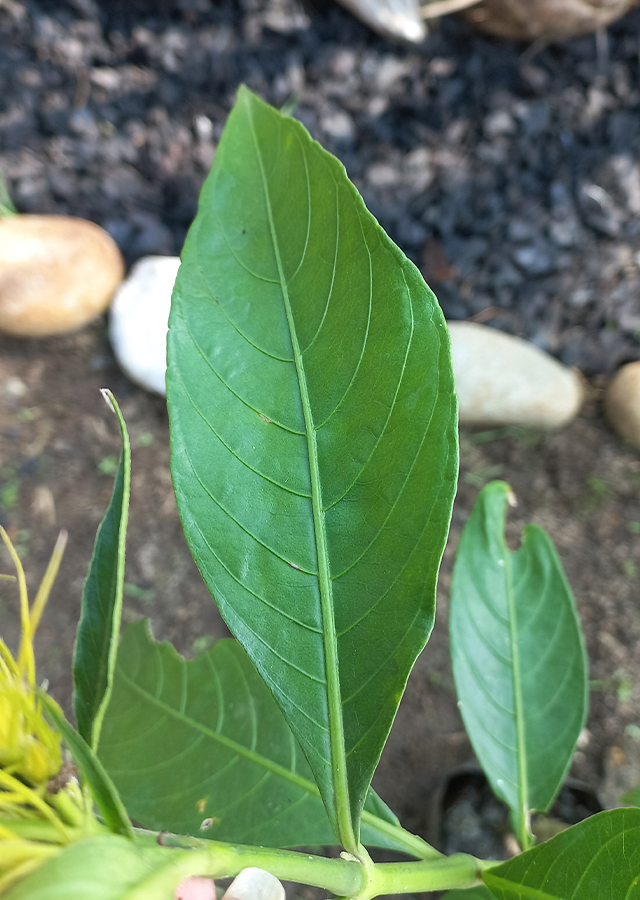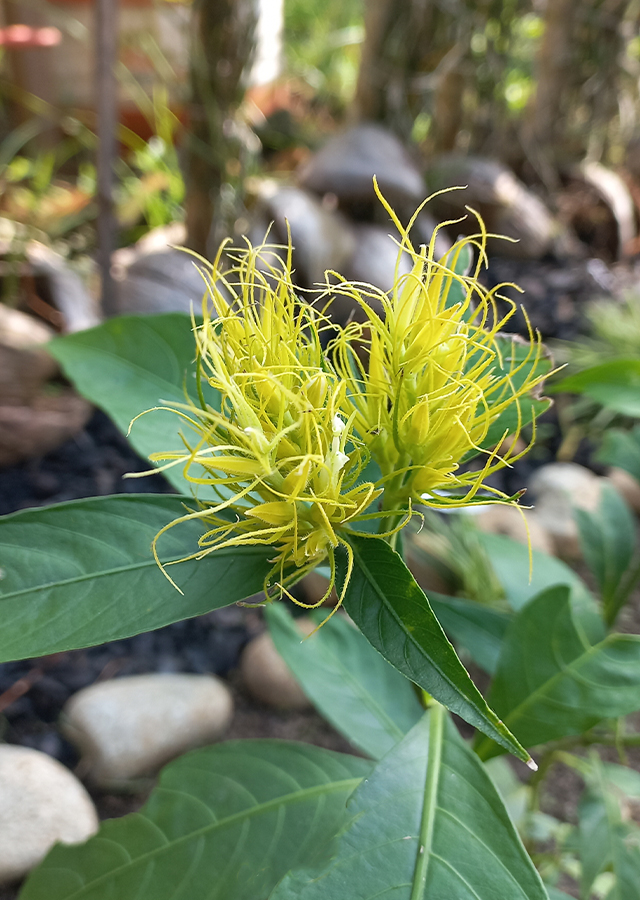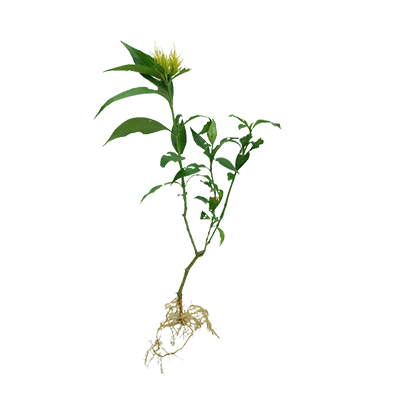Golden Plume
Schaueria calytricha (Otto ex Hook.) Orb.
Acanthaceae
Location in our garden
Principal



Synonym
Flavicoma capitata Raf.
Justicia calycotricha Link & Otto
Justicia flavicoma Lindl.
Habitus
Shrubs. Shrub, annual, 0.8–1.5 m tall
Part Used
The Whole Plant
Growing Requirements
Full Sunshine
Need Shade
Habitat
Forest
Overview
Schaueria calytricha is a flowering species native to the Brazilian tropics, Rio de Janeiro. This species is generally planted by the community as an ornamental plant both indoors and outdoors. Due to the unique shape of the flower when it blooms, and the striking color, this species is in demand by the public as an ornamental plant.
Vernacular Names
Yellow jacobinia (English).
Agroecology
Found growing in rainforests, at elevations ranging from 150 to 700 m above sea level. This species is best planted in moderately coarse, fertile, consistently moist but well-drained soil, in full sun in the tropics, or in partial shade. Its best growth occurs in humid climates where temperatures rise to 75-80 °F during the day but drop to a minimum of 60 °F at night. Golden plume is not tolerant of frost.
Morphology
- Roots - tap roots.
- Stems - young subquadrate, woody, glabrous or hairy with eglandular trichomes, concentrated in 2 rows.
- Leaves - simple or unifoliate, opposite, green, glossy, ovate to lanceolate or rarely oval, leaves pointed to heart-shaped or rarely rounded at base, leaf tips pointed to attenuate, leaf margins flat or wavy, venation pinnate, surface glabrous or with eglandular trichomes (usually confined to the main vein, at least on the upper or adaxial surface).
- Flowers - bisexual, flowering 3-5, stalks about 3–7 mm long. Bracts yellow, linear-triangular. The calyx is yellow, long, linear–triangular, hispidulous with erect eglandular and sessile glandular trichomes usually only on the adaxial surface. Crown is cream to pale yellow, externally glabrous or hispidulous with erect eglandular trichomes in veins, internally pubescent with flexible eglandular trichomes, tubular, extending to throat, proximal narrowed, upper lip grooved and lower lip trilobed. The stamens are inserted into the base of the crown tube, the hispidulous filament. The inflorescence consists of several flowers surrounded by dense yellow clumps, bracts and hair-like sepals. These tubular flowers last only a few days, but the yellow hair-like bracts stay fresh for weeks.
- Fruits - capsules, glabrous, containing few seeds, forced open with explosive dehiscence.
- Seeds - lenticular, reticulate with microgranules when immature.
Cultivation
Propagated by seeds and stem cuttings.
Chemical Constituents
No information found. Need further search.
Traditional Medicinal Uses
No information found. Need further search.
Part Used
Reference Sources
- Royal Botanic Gardens. Plant of the World Online: Schaueria calytricha (Otto ex Hook.) Orb.. https://powo.science.kew.org/taxon/urn:lsid:ipni.org:names:77165481-1. 24-06-22.
- Ana Luiza A. Coˆrtes, Thomas F. Daniel, Alessandro Rapini. 2016. Taxonomic revision of the genus Schaueria (Acanthaceae). Plant Syst Evol. DOI 10.1007/s00606-016-1301-y.
- Missouri Botanical Gardens. Schaueria flavicoma. https://www.missouribotanicalgarden.org/PlantFinder/PlantFinderDetails.aspx?taxonid=253142&isprofile=0&letter=s. 24-06-22.
- Flora Fauna Web. 2022. Schaueria calytricha (Otto ex Hook.) Orb. https://www.nparks.gov.sg/florafaunaweb/flora/3/7/3724. 24-06-22.
